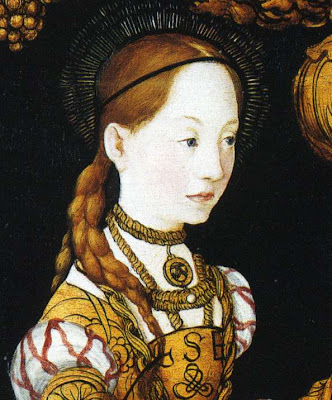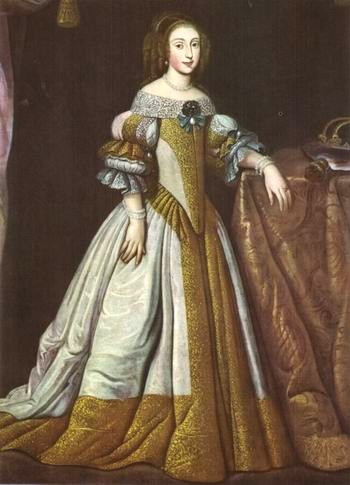As I am Norwegian myself, I thought to present to you one of our queens, Christina of Saxony, or Christine av Sachsen as she is known as in Scandinavia. As she was also born on Christmas Day I thought it would be a nice fit to present her on this day as well.
Humiliated by her husband’s relationship to her lady-in-waiting Edel Jernskjæg, which went as far as the King travelling to Denmark with his mistress, leaving his wife behind, Queen Christina showed herself as a strong and forceful woman who would not let the capital, Stockholm, go when a rebellion broke out in Sweden against Denmark and the Kalmar union in 1501.
Christina was born on the 25th of December, 1461 to Ernest, the Elector of Saxony and his wife Elisabeth of Bavaria (not to be confused with the Empress of Austria nor the Queen of Belgium). When she was sixteen she was betrothed to the son of Christian I of Denmark and Norway, John (or Hans as he is known as in Scandinavia). A year later, she travelled to Copenhagen and married on the 6th of September. John became King of Denmark in 1481 and King of Norway in 1483. Christina was crowned together with her husband. Together they went on to have five children, but only two of the children, Christian II and Elisabeth, reached adulthood.
Christina was a devout Catholic and was offended when two of her brothers fought for Reformation. Her brothers, Frederick and John, were actually two of the most important supporters Martin Luther had in the beginning. Charity was important to her, and she was a patroness of religious art and the writing of psalms and religious poetry.
What Christine is most known for is being the queen who refused to surrender Stockholm to the rebellions of the Kalmar union. She barred herself and a 1000 men inside the walls of the castle “Tre Kronor”, meaning “Three Crowns”. However, after eight months she had to give in after the Danish soldiers had been reduced from 1000 men to 70 by sickness (a plague had broken out) and starvation. There were rumours that the queen herself was dead! When she surrendered her position, she turned herself over to lady Ingeborg Tott, who met her at the castle and followed her to a convent. However, before she surrendered, she said she was only willing to do so if she herself and the people with her were allowed to go back to Denmark. The promise was made, but broken by Sten Sture the Elder who took her as a prisoner and held her at Vadstena Abbey until the peace negotiations with her husband was completed in 1503, after which she was released and returned to Denmark. After nearly three years she was finally home in Denmark, where her husband and his mistress had, in the meantime, enjoyed themselves. The king had also sent their daughter Elisabeth to Brandenburg to marry Joachim 1 Nestor, the Elector of Brandenburg.
The Queen decided to separate from her husband and had her own court at Næsbyhoved. She went to Germany in 1504 on a pilgrimage and she also visited her daughter while there. In 1513 she was widowed and her son Christian became king. She lived her life quietly at her small court, and died on the 8th of December 1521, at the age of 59. She was buried beside her husband.
Source: http://www.nb.no/utlevering/contentview.jsf?&urn=URN:NBN:no-nb_digibok_2007112600088#&struct=DIV76 ”Norges dronninger gjennom tusen år” by Nils Petter Thuesen, 1991.

